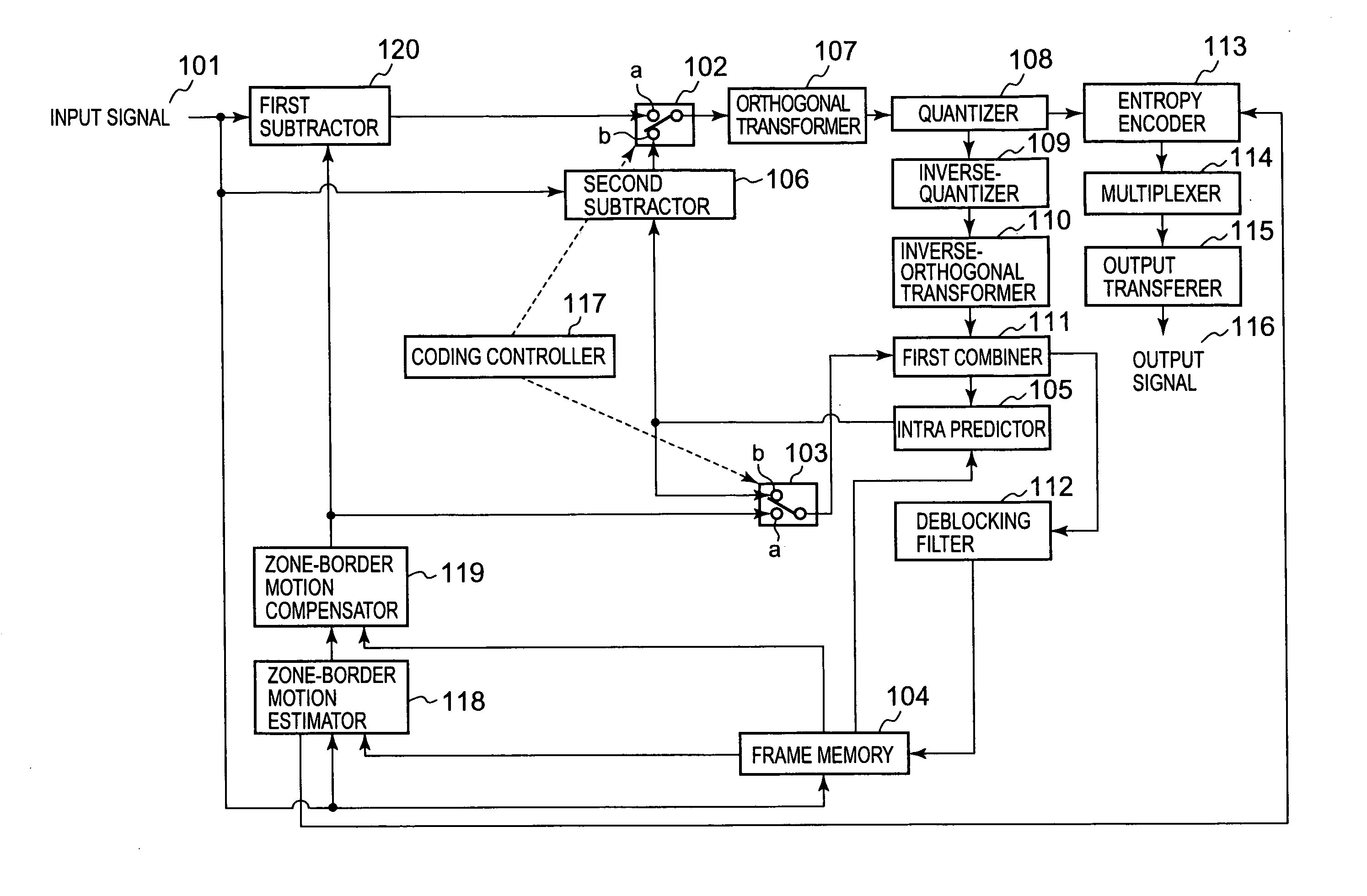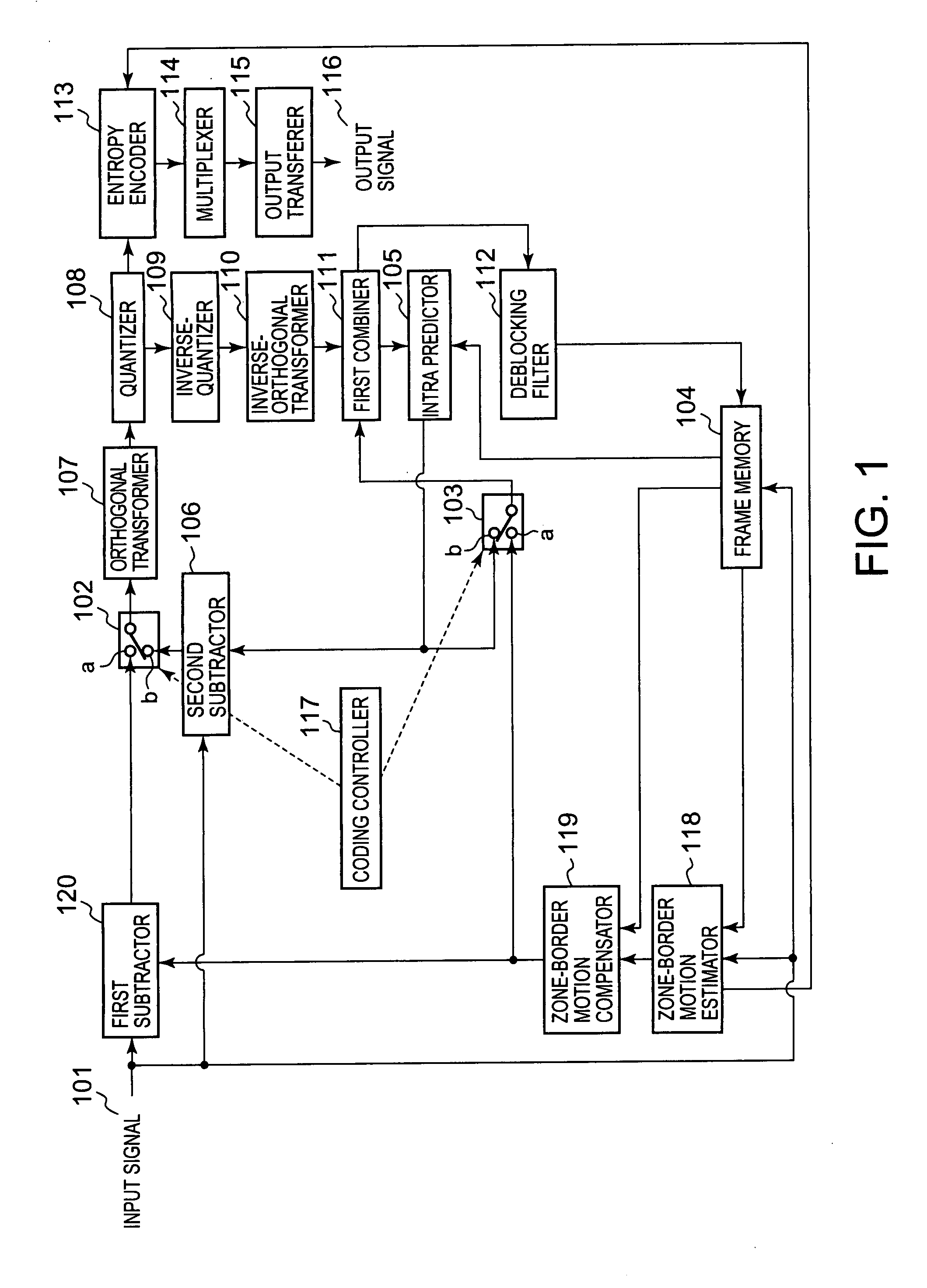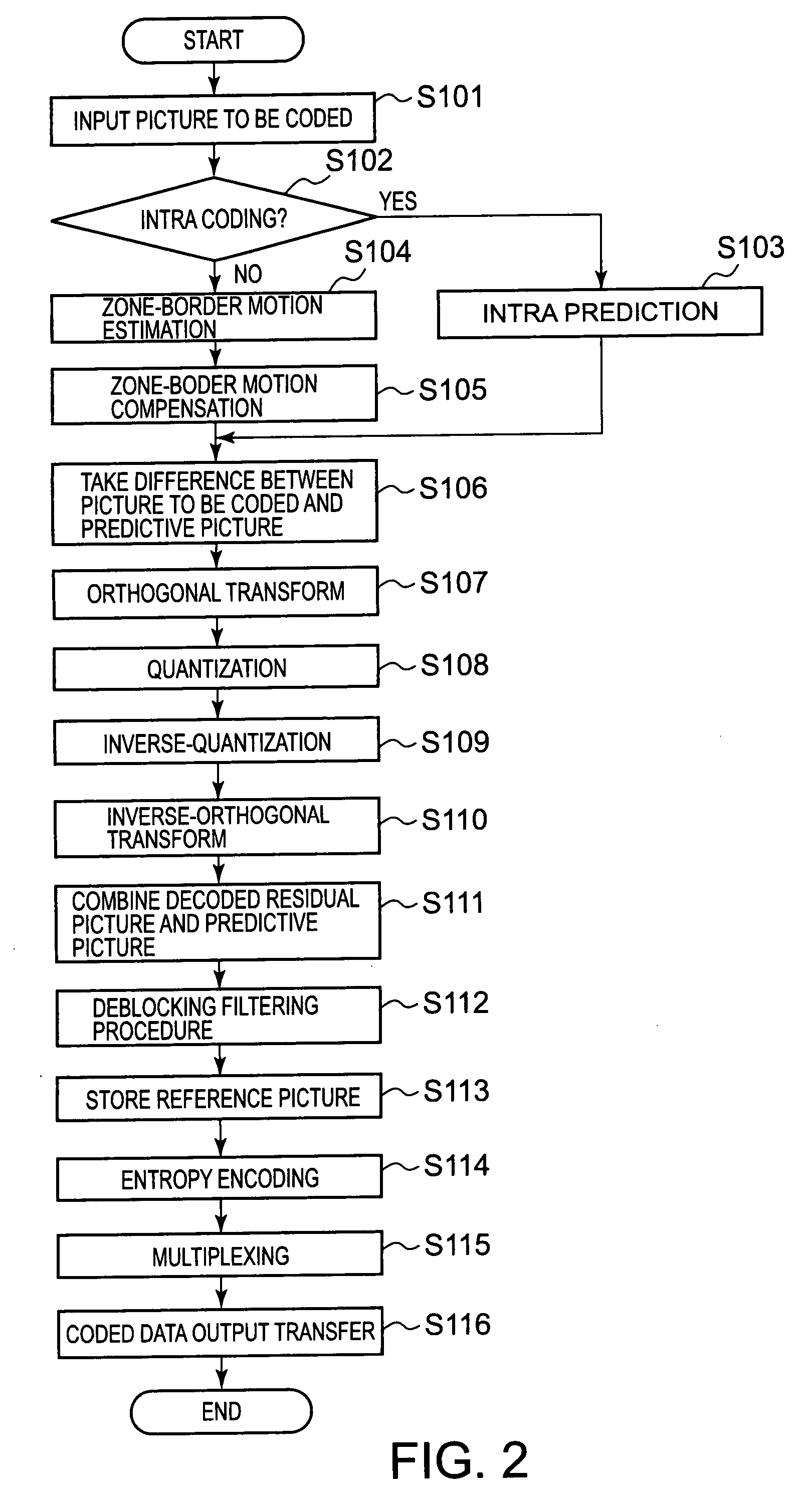Moving-picture coding apparatus, method and program, and moving-picture decoding apparatus, method and program
a moving picture and coding technology, applied in the field of moving picture moving picture decoding apparatus, method and program, can solve the problems of low texture data quality, insufficient mitigation of discontinuous situation between blocks, and inability to reduce the degree of smoothing required
- Summary
- Abstract
- Description
- Claims
- Application Information
AI Technical Summary
Benefits of technology
Problems solved by technology
Method used
Image
Examples
embodiment i
[0040] Disclosed first are first embodiments of a moving-picture coding apparatus, a moving-picture decoding apparatus, and their corresponding methods according to the present invention.
[0041]FIG. 1 shows a block diagram of a first embodiment of a moving-picture coding apparatus according to the present invention. As shown in FIG. 1, the coding apparatus in this embodiment is equipped at least with a switch 102, a switch 103, a frame memory 104, a second subtractor 106, an orthogonal transformer 107, a quantizer 108, an inverse-quantizer 109, an inverse-orthogonal transformer 110, a first combiner 111, an entropy encoder 113, a multipixer 114, an output transferer 115, a coding controller 117, a zone-border motion estimator 118, a zone-border motion compensator 119, and a first subtractor 120. Moreover, it is preferable for the coding apparatus to be equipped with an intra predictor 105 and a deblocking filter 112, as shown in FIG. 1. This embodiment features the zone-border motio...
embodiment ii
[0138] Disclosed next are second embodiments of a moving-picture coding apparatus and a moving-picture decoding apparatus according to the present invention.
[0139]FIG. 5 shows a block diagram of the second embodiment of the moving-picture coding apparatus according to the present invention. In the figure, the component parts analogous to those in FIG. 1 are given the same reference numerals, with detailed explanation thereof being omitted. In addition to the component parts analogous to those of the moving-picture coding apparatus of FIG. 1, the moving-picture coding apparatus in this embodiment is equipped a switch 501, a motion estimator 502, a motion compensator 503, and a residual determiner 504, for motion estimation and compensation in H. 264 / AVC.
[0140] There are three prediction modes in AVC: intra predictive coding, forward predictive coding, and bidirectional predictive coding.
[0141] In intra predictive coding, orthogonal transform is performed at the orthogonal transfor...
embodiment iii
[0202] The present invention is not limited to the above embodiment I or II, but also includes programs that achieve the functions of the coding apparatus in FIG. 1 or FIG. 5, and the functions of the decoding apparatus in FIG. 3 or FIG. 7, on a central processing apparatus that is a computer shown in FIGS. 9 to 12, the programs being described as follows.
[0203]FIG. 9 is a block diagram of a data processing system operated with a first embodiment of a moving-picture coding program according to the present invention. The data processing system 900 is equipped with: an input unit 901 for entering several kinds of data; an output unit 902 for outputting several kinds of data; a central processing and controlling unit 903 that runs on the first embodiment of the moving-picture coding program according to the present invention; an external memory unit 904; a temporary memory unit 905 to be used, for example, as a working area in processing at the central processing and controlling unit ...
PUM
 Login to View More
Login to View More Abstract
Description
Claims
Application Information
 Login to View More
Login to View More - R&D
- Intellectual Property
- Life Sciences
- Materials
- Tech Scout
- Unparalleled Data Quality
- Higher Quality Content
- 60% Fewer Hallucinations
Browse by: Latest US Patents, China's latest patents, Technical Efficacy Thesaurus, Application Domain, Technology Topic, Popular Technical Reports.
© 2025 PatSnap. All rights reserved.Legal|Privacy policy|Modern Slavery Act Transparency Statement|Sitemap|About US| Contact US: help@patsnap.com



